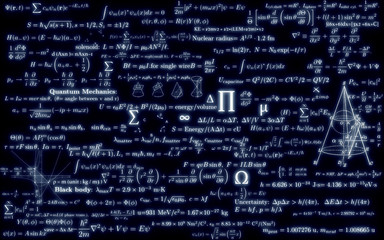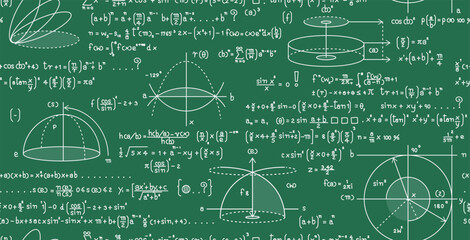When you see something like 7006×60, it looks simple — just a multiplication problem. But when you take a closer look, this small equation opens the door to understanding how numbers interact, grow, and multiply. Multiplication isn’t just a school subject; it’s a universal tool that drives calculations in business, engineering, science, and daily life. So, when we calculate 7006×60, we’re doing more than finding an answer. We’re exploring how values scale and relate. The product of 7006×60 equals 420,360, and that number can represent anything — money, distance, time, or even data. Understanding how we get to that number builds confidence in math and logic.
Breaking Down 7006×60 Step by Step
Let’s break it down clearly. The expression 7006×60 means we’re taking the number 7006 and multiplying it by 60. That’s the same as adding 7006 sixty times, but of course, multiplication gives us a faster, smarter shortcut. We can even separate it for easier understanding: 7006×60 = (7006×6)x10. Multiplying 7006 by 6 gives 42,036, and then multiplying that by 10 gives 420,360. So the product of 7006 and 60 is 420,360 — simple, precise, and logical. Learning to see how numbers expand through patterns like this strengthens your mental math skills.
Why Multiplication Matters
Here’s the thing: multiplication like 7006×60 isn’t just about numbers; it’s about relationships. Every time you multiply, you’re scaling one quantity by another. Businesses use this idea to calculate profits, factories use it to predict production, and teachers use it to explain growth. Multiplication helps us visualize bigger numbers in a structured way. It’s not random — it’s a system that models how things increase. Understanding this makes numbers feel less abstract and more useful in everyday life.
The Logic Behind Multiplying by 60
Why 60? The number 60 has special importance in math, science, and daily life. We use it for time (60 seconds in a minute, 60 minutes in an hour), for angles (360 degrees divided by 6 gives 60-degree increments), and for measurement systems. When we multiply 7006×60, it could represent 7006 minutes, seconds, or units, scaled up by one hour. It’s fascinating how certain numbers like 60 have deep practical roots across different fields — a reminder that math is not random but connected to how humans think and measure.
Real-Life Examples of 7006×60
Imagine a warehouse where one machine produces 7006 items per hour. If that machine runs for 60 hours straight, how many items will it make? The answer is simple — 7006×60 = 420,360 items. This example shows how multiplication directly translates into reality. Or consider a business earning $7006 each day for 60 days; the total income becomes $420,360. These simple patterns show how mathematical ideas turn into financial and operational decisions.
Multiplication in Everyday Life
You might not realize it, but multiplication like 7006×60 happens around you all the time. When you calculate grocery costs, compare phone plans, or estimate travel times, you’re multiplying without thinking. A car moving at 60 km/h for 7006 minutes covers a measurable distance you can predict using the same operation. This everyday math gives structure and predictability to life. It’s what keeps systems running smoothly.

Understanding the Number 7006
Let’s talk about 7006. It’s a four-digit number, sitting between 7000 and 7010, and it represents a quantity that’s already significant. It can symbolize units, steps, or measurements. When multiplied, it grows exponentially. Seeing 7006 multiplied by 60 gives us an excellent sense of scale — how even medium-sized numbers can create huge results. Understanding base values like this helps build intuition for more advanced math topics later on.
The Power of Multiplying by Tens
When we multiply by numbers like 10, 100, or 1000, we shift digits and increase the value exponentially. In 7006×60, the “0” in 60 makes a big difference because multiplying by 10 scales the entire number. Essentially, multiplying by 60 is multiplying by 6, then by 10. This small step shows how number systems rely on place value — one of the most important ideas in math. Every zero counts, literally.
Mathematical Patterns Hidden in 7006×60
Mathematics thrives on patterns. If we break 7006×60 into smaller chunks, we can see them clearly. Multiply 7000×60 first, which gives 420,000. Then add 6×60, which gives 360. Add both results together — you get 420,360. This pattern of splitting numbers makes big calculations easier. It’s how calculators and computers process numbers internally, step by step, using basic arithmetic logic that humans have used for centuries.
How Students Can Learn from 7006×60
Learning math becomes easier when you connect abstract numbers to real meaning. Teaching students to solve 7006×60 step by step helps them visualize multiplication. It’s not just pressing buttons — it’s understanding structure. When they see that multiplying a number by 60 is the same as multiplying by 6, then by 10, they start grasping how math builds from simple rules into complex operations.
Using 7006×60 in Business and Finance
In finance, multiplication is everywhere. Companies multiply daily sales, hourly wages, and production rates to forecast totals. If a company earns $7006 per hour for 60 hours, its total is $420,360 — a concrete example of how simple math guides big financial decisions. Understanding these operations allows managers and entrepreneurs to plan budgets, predict profits, and make smarter choices based on numerical insight.
Why Mental Math Still Matters
In a world full of calculators, you might ask: why do we need to learn 7006×60 manually? The answer is simple — mental math sharpens logic and memory. When you calculate on your own, you understand number flow and relationships. That builds confidence and improves problem-solving. Even though machines can calculate instantly, humans still need to understand what those calculations mean.
Multiplication Across Cultures
Multiplication is a universal language. Whether it’s 7006×60 in English, or the same equation written in another script, the result — 420,360 — stays the same. That’s the beauty of mathematics: it transcends culture and language. People across history have used multiplication to trade, build, and innovate. From ancient merchants to modern engineers, this operation ties human progress together.

Technology and Multiplication
When computers process something like 7006×60, they’re performing binary multiplication. It’s not just arithmetic — it’s computation. Every app, game, or website that shows numbers depends on this process. Whether it’s calculating time, distance, or payment, computers repeat these multiplications millions of times per second. Understanding this helps us appreciate how basic math powers modern technology.
The Concept of Scaling
Multiplication is about scaling — making something bigger or smaller by a specific factor. When we multiply 7006×60, we’re scaling 7006 sixty times larger. This concept shows up everywhere: scaling a recipe, designing a building, or adjusting a budget. Once you understand scaling, math becomes practical, not just theoretical. It becomes a tool you can use every day.
7006×60 in Engineering and Design
Engineers use calculations like 7006×60 to determine capacity, energy, or production values. For example, if a factory produces 7006 parts per minute, in 60 minutes it outputs 420,360 parts. In design, this same principle applies when calculating material needs or space dimensions. Multiplication ensures precision, efficiency, and balance — things every technical field relies on.
Learning Multiplication Strategies
Many people struggle with big numbers like 7006×60, but using strategies helps. You can break numbers apart (7000+6), multiply separately, then add results. This is called the distributive property, and it’s one of the smartest shortcuts in math. It turns large numbers into manageable chunks, making multiplication less intimidating and more logical.
Common Mistakes in Multiplication
When solving 7006×60, one common mistake is misplacing zeros or skipping a step in calculation. It’s important to align digits correctly and understand the role of each place value. Checking your answer by estimation also helps. For example, 7000×60 is around 420,000, so your answer should be close to that. Awareness of patterns prevents small mistakes from snowballing.
Why 420,360 Is More Than Just a Number
The result of 7006×60 — 420,360 — is more than digits; it’s a product that represents growth. Whether you apply it to finance, time, or manufacturing, that number means multiplication worked perfectly. Seeing this value reminds us that even large outcomes start with small numbers multiplied consistently. It’s a perfect reflection of how effort compounds over time.
The Timeless Beauty of Math
At its core, math like 7006×60 shows us how simple patterns lead to order. Multiplication gives structure to chaos. It helps us measure, build, and understand the world logically. Every time you multiply, you’re using the same tools that scientists, builders, and thinkers have relied on for centuries. And that’s what makes numbers timeless.

Conclusion
In the end, 7006×60 might look like just another equation, but it holds layers of meaning. It’s about logic, structure, and growth. The product — 420,360 — stands as proof of how numbers multiply in consistent, predictable ways. Whether you’re learning, teaching, or applying math in daily life, understanding multiplication gives you control over complexity. Once you grasp how it works, you’ll start seeing math not as a chore, but as a language of understanding.
FAQs
Q1: What is the result of 7006×60?
A1: The result of 7006 multiplied by 60 is 420,360.
Q2: How can I calculate 7006×60 easily?
A2: Multiply 7006×6 first (42,036), then multiply the result by 10. You’ll get 420,360.
Q3: Why is 60 an important number in math?
A3: 60 is widely used in time, angles, and measurement systems, making it a key number across disciplines.
Q4: What’s the best way to teach multiplication like 7006×60?
A4: Break the numbers apart using the distributive method, explain patterns, and relate it to real-life examples.
Q5: Why does learning multiplication matter today?
A5: Even in a digital world, understanding multiplication builds logic, problem-solving skills, and number sense.
Read also: Discover the Power of WhatsMyCMS Detect Any CMS Instantly












